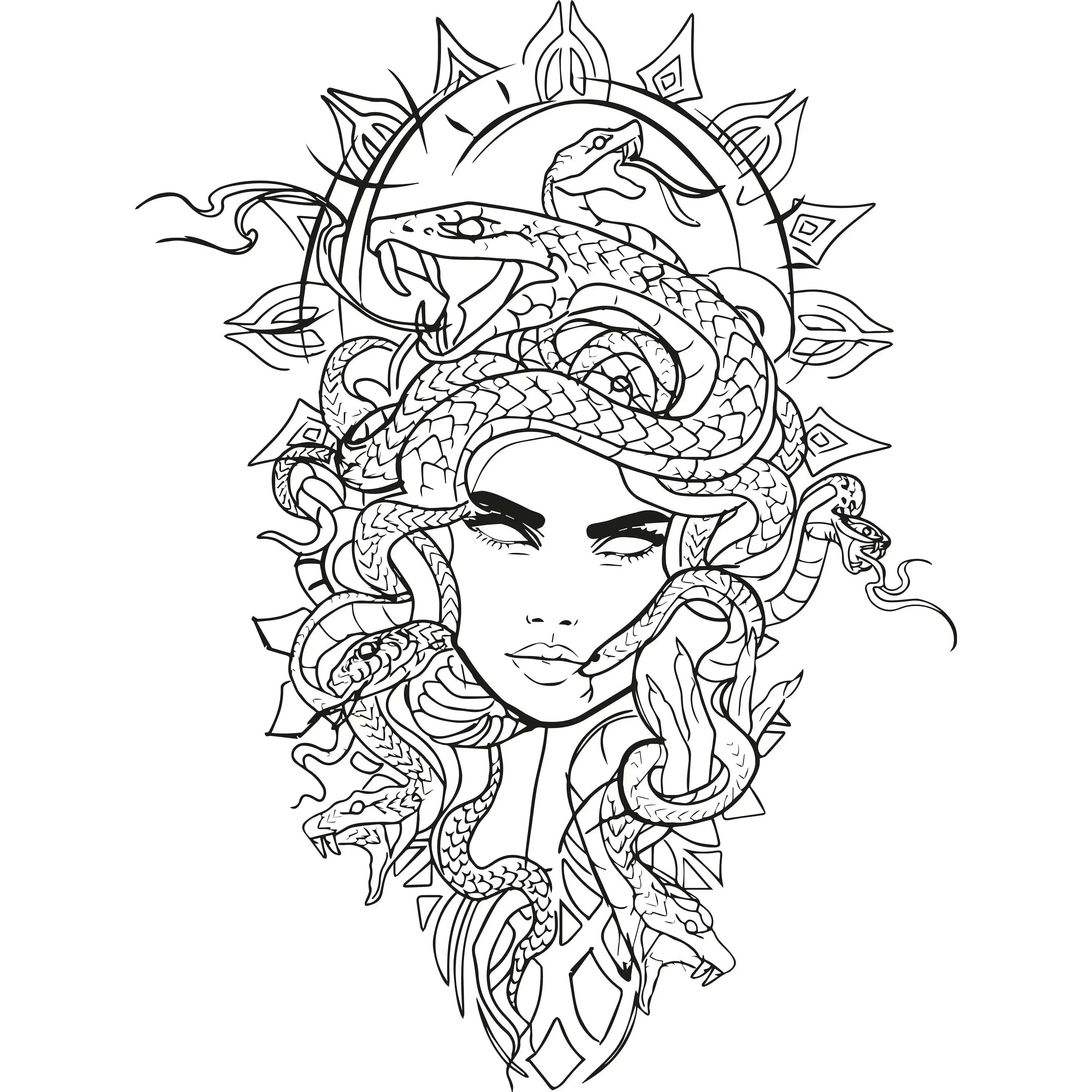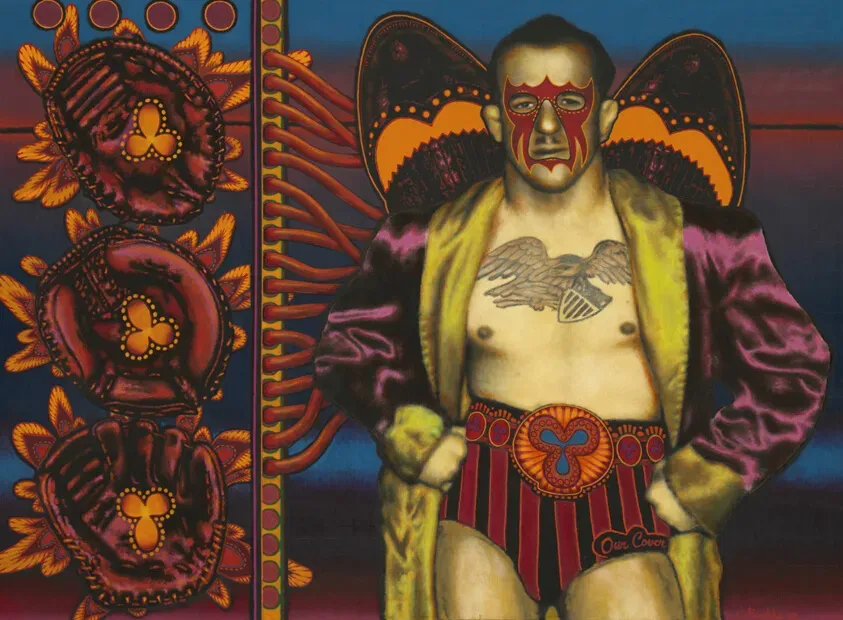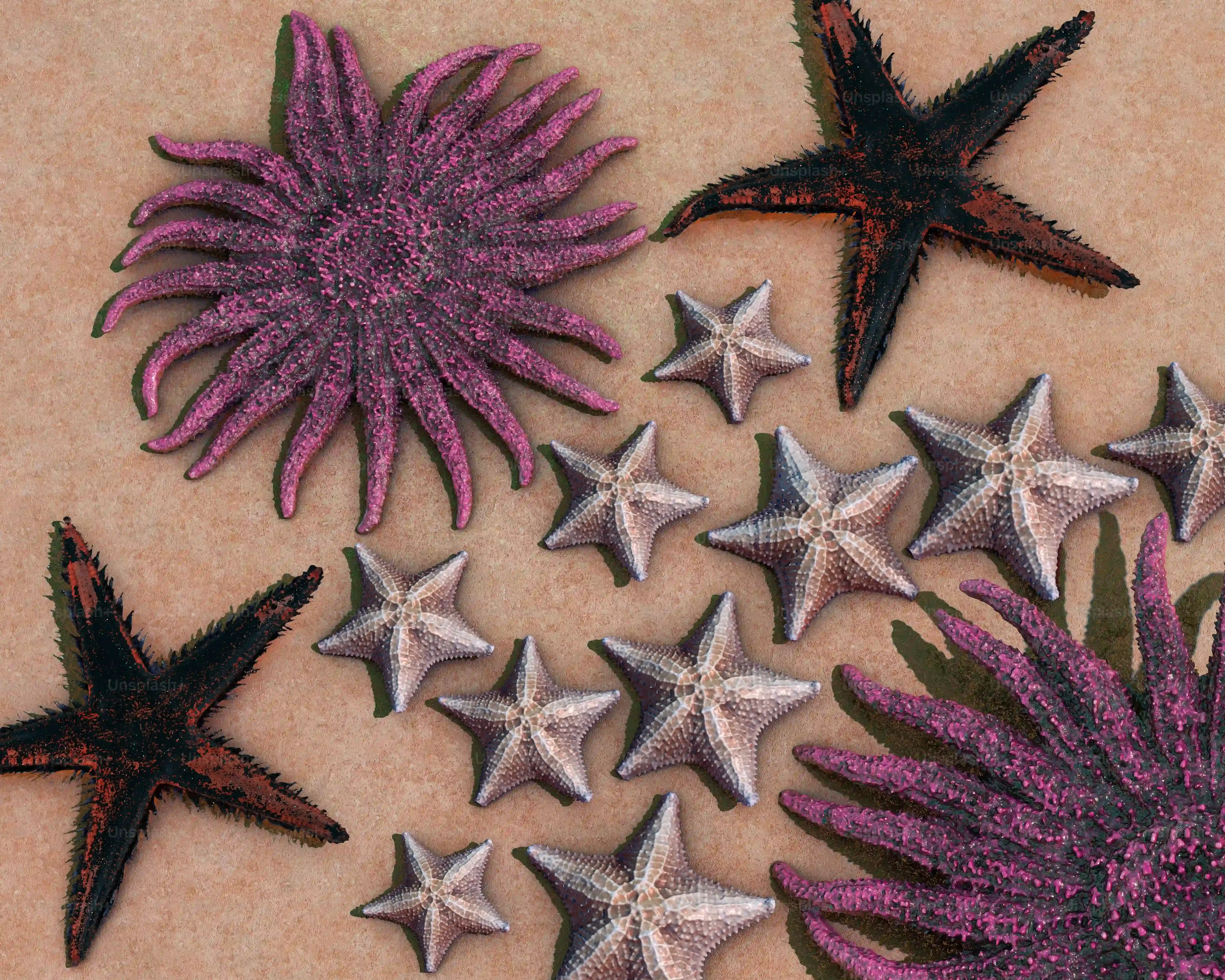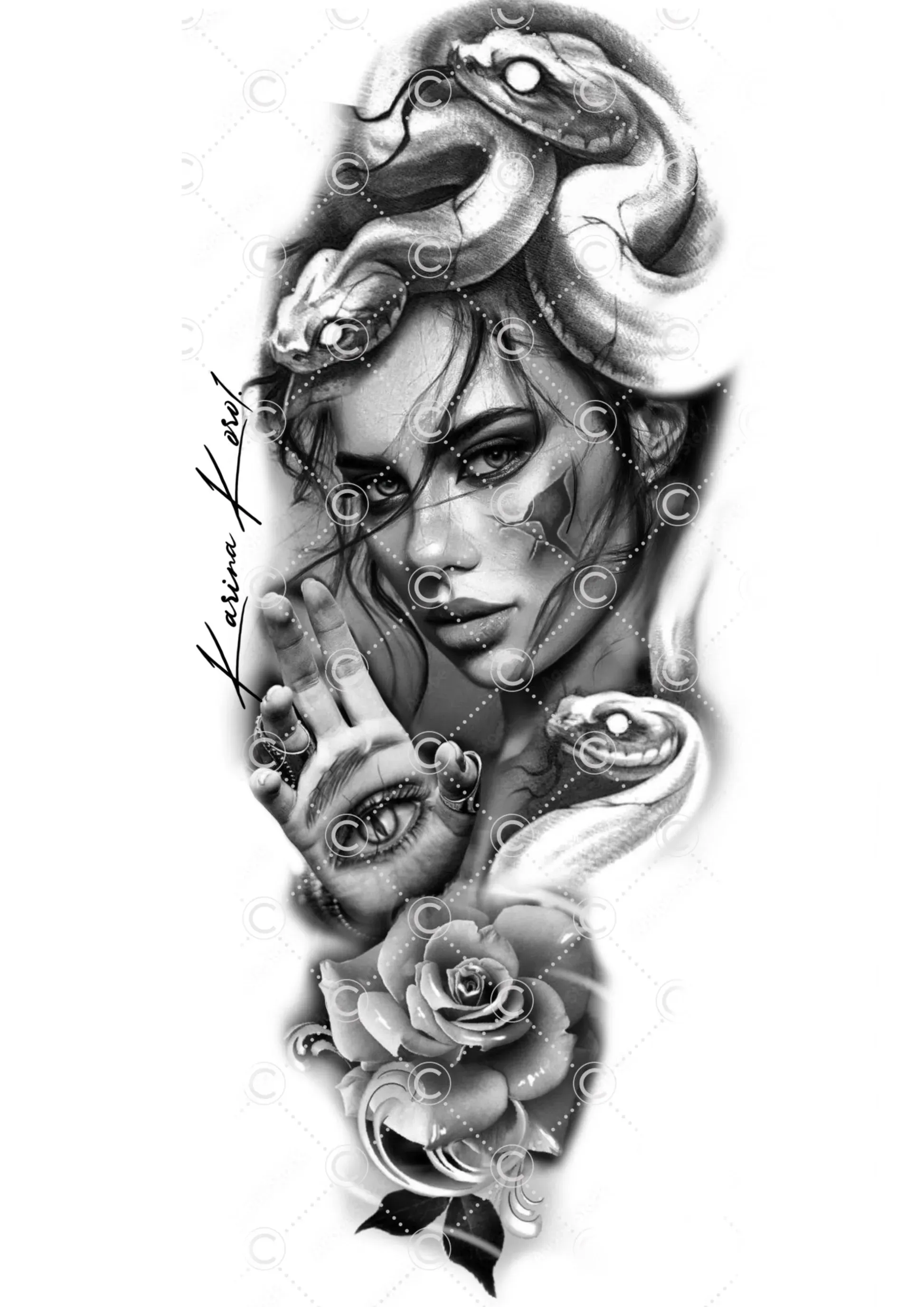Table of Contents
Walk into any tattoo shop lately, and you're bound to see them. Medusa tattoo designs have exploded in popularity, moving from niche mythological art to a widely recognized symbol etched onto skin. It's not just about a cool image with snakes for hair anymore. This ancient figure, often depicted as a monster, has taken on a powerful, modern significance. But what exactly drives this surge in popularity? Is it merely a trend, or is there something deeper resonating with people? Getting a tattoo is a commitment, so understanding the layers behind these striking medusa tattoo designs is crucial. Beyond the visual appeal, these pieces often carry weight, telling stories of resilience, survival, and reclaiming power. This article will cut through the noise and explore the rich history, evolving symbolism, various artistic styles, and practical considerations surrounding choosing and getting a medusa tattoo that truly speaks to you. We'll look at why this Gorgon's gaze is turning heads and what you need to know before you commit.
The Medusa Tattoo Trend: More Than Just Ink
The Medusa Tattoo Trend: More Than Just Ink
Suddenly, Medusa is Everywhere
So, you've noticed it too, huh? Medusa tattoo designs are suddenly popping up everywhere you look. It feels like one minute she was just another cool figure from Greek myths, and the next, she's on forearms, backs, thighs – you name it. This isn't just a random surge; there's a real story behind why this particular image has resonated so strongly with so many people recently. It wasn't some big marketing push or a celebrity suddenly rocking one (though I'm sure that helped). It felt more organic, like something clicked in the collective consciousness, especially online.
It's fascinating to watch how an ancient myth gets a modern twist. We're talking about a figure traditionally seen as a monster, someone to be feared, whose gaze turned men to stone. Now, that same image is being embraced as a symbol of strength. It’s a powerful shift, right? People aren't getting these medusa tattoo designs just because they look cool, though they definitely do. They're getting them because they represent something personal and significant.
Why This Myth, Why Now?
Digging a bit deeper, you find the narrative often linked to surviving trauma, particularly sexual assault. The traditional myth paints Medusa as a victim transformed into a monster after being violated. Reclaiming her image as a symbol of power – the power to turn predators to stone, essentially – is a potent message for survivors. It flips the script entirely. Instead of shame or fear, the tattoo becomes a visible declaration of resilience.
Of course, not everyone getting a medusa tattoo designs is doing so for this specific reason. Some connect with the general themes of female strength, overcoming adversity, or even just the aesthetic appeal of snakes and a powerful female figure. But the prevalent narrative around survival certainly fueled the trend's rapid spread and gives it a weight that goes beyond typical tattoo fads. It’s a conversation starter, a quiet nod to a shared experience for some, or simply a bold artistic choice for others.
Why are people choosing Medusa?
- Symbol of strength and resilience
- Representation of overcoming trauma
- Connection to ancient mythology
- Empowerment and reclaiming narrative
- Striking visual aesthetic
Decoding the Meaning Behind Medusa Tattoo Designs
Decoding the Meaning Behind Medusa Tattoo Designs
From Monster to Martyr: The Myth's Evolution
Alright, let's peel back the layers on these medusa tattoo designs. Forget what you might have learned from old monster movies. The original Greek myth, particularly Ovid's version, paints a much darker picture than just a snake-haired villain. Medusa was a beautiful priestess in Athena's temple. Poseidon, the god of the sea, decided he wanted her, and he took her – right there in Athena's sacred space. Athena, instead of punishing Poseidon, cursed Medusa. Her stunning hair became venomous snakes, and her beautiful eyes gained the power to petrify anyone who looked at them. She was then exiled. So, her transformation wasn't some inherent evil; it was a punishment for being a victim of divine sexual violence. That's a crucial detail often smoothed over, and it fundamentally changes how you see the image.
This historical context is vital when you're looking at modern medusa tattoo designs. People aren't necessarily celebrating a monster. They're acknowledging a figure who suffered a horrific injustice and was then ostracized and weaponized because of it. The narrative flips from a tale of a creature to a tragedy of a woman. Understanding this backstory is key to grasping the depth many people assign to their ink.
Reclaiming Power: Survival and Strength
So, how does this ancient, tragic figure become a symbol of strength and survival today? It's about reclaiming the narrative. The power to turn someone to stone, once a curse that isolated her, is now interpreted by many with medusa tattoo designs as a protective force. It's the ability to stop a threat in its tracks, to defend oneself against those who would cause harm. For survivors of sexual assault or other forms of trauma, this symbolism is incredibly potent. The tattoo becomes an outward expression of an internal battle fought and survived.
It says, "What happened to me doesn't define me, and I have the strength to overcome and protect myself." It's a visual defiance, a way to take a symbol of punishment and transform it into a badge of resilience. While the aesthetic is undeniably striking, the emotional weight behind many medusa tattoo designs is what gives them their true power in the current cultural landscape.
What does a Medusa tattoo symbolize for the wearer?
- Resilience in the face of adversity.
- Survival of trauma or assault.
- Protection against future harm.
- Reclaiming personal power.
- Independence and female strength.
Exploring Popular Medusa Tattoo Designs and Styles
Exploring Popular Medusa Tattoo Designs and Styles
Styles and Looks: More Than Just Snakes
so you're sold on the meaning, maybe you connect with the symbolism, but now you're thinking, "Alright, what does one of these medusa tattoo designs actually *look* like?" Good question. The beauty of this trend is the sheer variety in how artists interpret the myth. You're not limited to one static image. You'll see everything from hyper-realistic portraits that look like they could blink, to bold, traditional American style pieces with thick lines and solid colors. Then there are illustrative styles that lean into the more artistic, sometimes darker, or more ethereal aspects of the story. Some focus entirely on her face and the intensity of her gaze, while others highlight the chaotic energy of the snakes writhing around her head. It really depends on the vibe you're going for and the artist's personal style.
What kind of style speaks to you?
- Realism: For a lifelike, detailed portrait.
- Traditional: Bold lines, strong colors, classic tattoo look.
- Illustrative: More artistic, often combines different techniques.
- Blackwork: Focuses on shading and line work, no color.
- Neo-Traditional: A modern twist on traditional, more detail and color gradients.
- Geometric: Incorporating geometric shapes into the design.
Key Elements: What Makes a Medusa Tattoo Pop?
Beyond the overall style, specific elements make medusa tattoo designs instantly recognizable and allow for personalization. The snakes, obviously, are a huge part of it. You can have them sleek and stylized, or wild and venomous-looking. Her eyes are another crucial feature; artists often put a lot of focus on the gaze to convey power, sorrow, or defiance. Some designs include other mythological elements, like Greek columns, armor, or even Perseus's shield reflecting her image (though many modern interpretations deliberately omit Perseus or his decapitation to focus solely on Medusa's strength). The expression on her face is key too – is she angry, sorrowful, stoic, or powerful? These details allow each medusa tattoo design to tell a slightly different story.
Consider these elements for your design:
Element | Potential Interpretation |
|---|---|
The Snakes | Transformation, danger, protection, chaotic energy |
The Gaze | Power, defense, intensity, sorrow, defiance |
Facial Expression | Anger, resilience, tragedy, strength |
Omitted Elements (like Perseus) | Focus on Medusa's story alone, reclaiming narrative |
Finding the Right Spot: Placement for Your Medusa Tattoo
Finding the Right Spot: Placement for Your Medusa Tattoo
Where Does Medusa Sit Best?
Alright, you've settled on getting a Medusa tattoo design. Great choice. Now comes the puzzle of where to actually put this striking piece of art on your body. It's not just about finding a blank space; the location can really add another layer of meaning to the tattoo. For instance, a lot of people choose the forearm. It's visible, easy to show off (or cover up if needed), and provides a decent canvas for detail, especially if you're going for a realistic or illustrative style. The back is another popular spot, offering a much larger area for intricate designs, perhaps incorporating the full figure or adding more elements from the myth. Thighs and calves also work well for larger pieces and can be easily concealed.
Some go for more discreet locations, like the upper arm, shoulder blade, or even the back of the neck. These spots might be chosen for personal reasons, perhaps making the symbol more of a private declaration than a public one. The placement often reflects how the wearer wants the tattoo to interact with the world – a bold statement on a forearm versus a hidden source of strength on a shoulder. Think about how often you want to see it and how often you want others to see it.
Common Medusa Tattoo Placement Spots:
- Forearm: High visibility, good canvas size.
- Back: Allows for large, detailed pieces.
- Thigh/Calf: Good for medium to large designs, easily covered.
- Upper Arm/Shoulder: More private, can be easily revealed.
- Sternum/Ribs: Often chosen for symbolic or aesthetic reasons, can be painful.
Factors Beyond Visibility
Choosing the spot for your medusa tattoo design isn't just about where it looks good or how visible it is. You also need to consider the practical stuff. Size matters – a small, detailed Medusa head might look fantastic on an inner wrist, but a full back piece obviously needs, well, your entire back. Pain tolerance is another big one. Ribs and sternum might offer cool aesthetic possibilities, but let's be real, they're going to hurt. Areas with more muscle and fat, like the forearm or calf, tend to be less painful than bony spots.
Think about how the skin in that area ages and changes over time. Some spots are more prone to stretching or sun exposure, which can affect how the tattoo looks years down the line. Also, consider your profession or lifestyle. While tattoos are way more accepted now, some jobs still have policies about visible ink. Ultimately, the best spot is the one that feels right for you, balancing the visual impact, personal meaning, practicalities, and yes, how much discomfort you're willing to endure for your art.
Considering Your Medusa Tattoo: What to Know Before You Ink
Considering Your Medusa Tattoo: What to Know Before You Ink
Finding the Artist Who Gets It
Alright, you're hooked on the idea of getting one of these powerful medusa tattoo designs. Fantastic. But before you march into the nearest shop, pump the brakes for a second. This isn't a flash tattoo off the wall (unless you find a really cool, specific flash piece, I guess). A significant piece like a Medusa requires an artist who understands the nuances, both technically and symbolically. You need someone whose style aligns with the vision you have in your head – whether that's hyper-realism, bold traditional, or something more illustrative. Stalk their portfolio online. Look specifically for examples of detailed portraits, snake work, and how they handle complex textures like hair and scales. Don't just pick the cheapest artist or the one available tomorrow. Good work takes time and skill. A consultation is non-negotiable. Talk to them, share your ideas, and see if you click. If they rush you or don't seem genuinely interested in the meaning behind your medusa tattoo designs, walk away. Seriously.
The Design Process and Consultation
Once you've found an artist you trust, the real fun (and sometimes slightly stressful part) begins: the design. You'll sit down and hash out the specifics. Bring reference images – lots of them – but be open to the artist's input. They're the professionals; they know what works on skin and what doesn't. Discuss the size, placement, style, and the specific elements you want included (or excluded, like poor old Perseus). This is your chance to convey the personal meaning behind your medusa tattoo designs. A good artist will listen and incorporate your story into the visual. Don't be afraid to speak up if you don't like something in the initial sketch. This is going on your body permanently, so it needs to be right. Be patient; the perfect custom design takes time to create.
Questions to ask your potential tattoo artist during a consultation:
- Have you done detailed portrait or snake work before?
- What is your process for designing custom medusa tattoo designs?
- How long do you estimate the tattoo will take?
- What is your hourly rate or the estimated total cost?
- What is your typical aftercare advice?
Aftercare is Not Optional
So, you survived the needle and you've got your stunning medusa tattoo design. Congratulations. Now, don't screw it up in the healing process. Aftercare is crucial for how your tattoo looks long-term and preventing infection. Your artist will give you specific instructions, and you need to follow them religiously. This usually involves keeping it clean with mild soap and water, applying a thin layer of recommended ointment or lotion, and avoiding soaking it in baths or pools. Stay out of direct sunlight while it's healing, and honestly, for the life of the tattoo, use sunscreen. Sun is the enemy of ink; it fades colors and blurs lines over time. Treat your new Medusa with respect during healing, and she'll look fierce for years to come.
More Than Just Stone: The Lasting Impact of Medusa Tattoos
We've navigated the winding paths of history and modern interpretation, from ancient myth to contemporary skin art. Medusa tattoo designs are clearly more than just fleeting trends or cool visuals. They represent a complex knot of vulnerability, violation, and fierce strength. Whether you're drawn to the classic Gorgon stare, a stylized artistic take, or the deeply personal symbolism of survival, remember that putting this image on your body is a statement. It's a public declaration, a private reminder, or simply an appreciation for a powerful, enduring figure. Choosing a medusa tattoo means choosing a story, one that will stay with you long after the needle stops buzzing. Consider the weight, find the right artist, and wear your ink with the understanding of the many layers it holds.